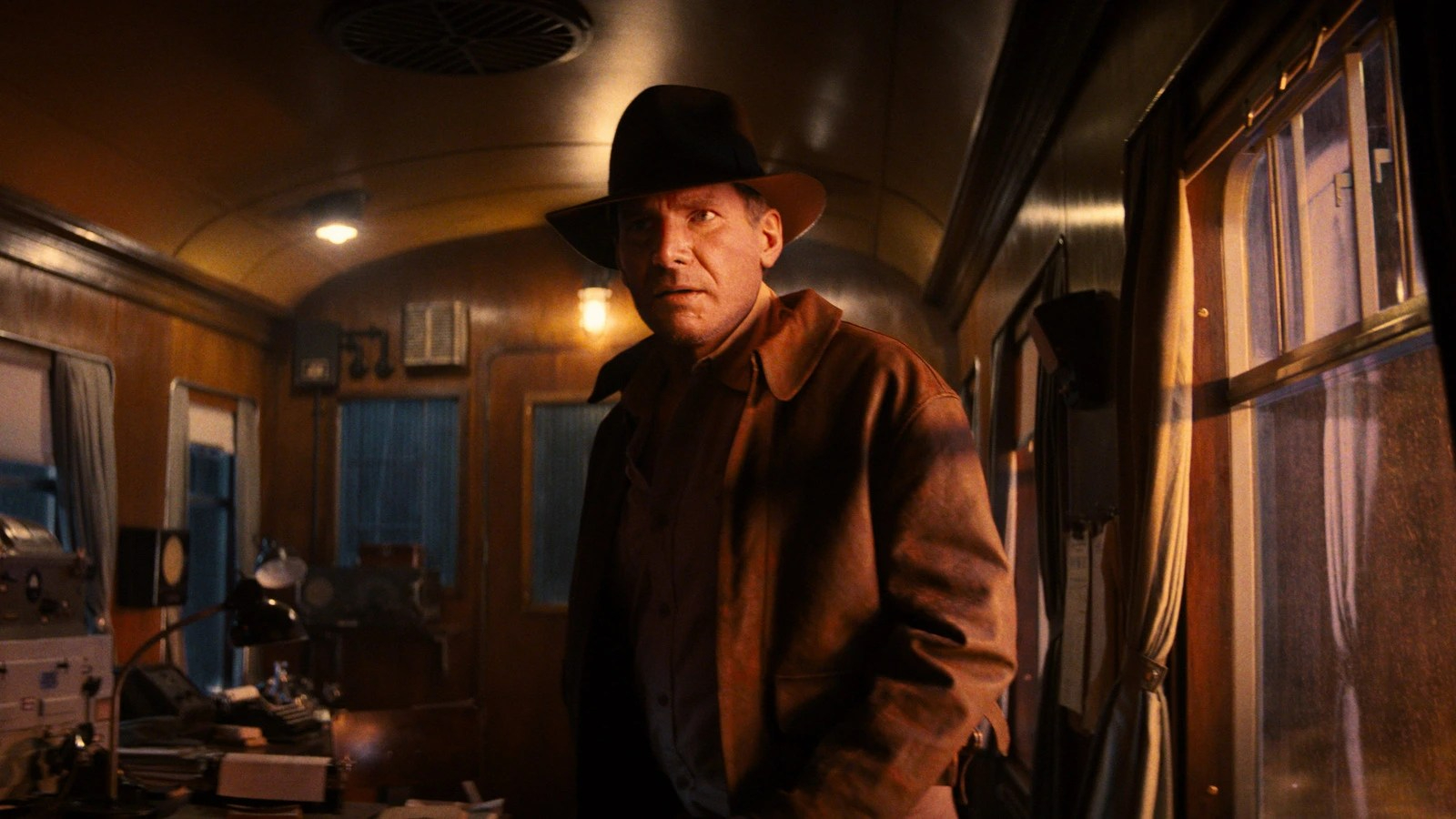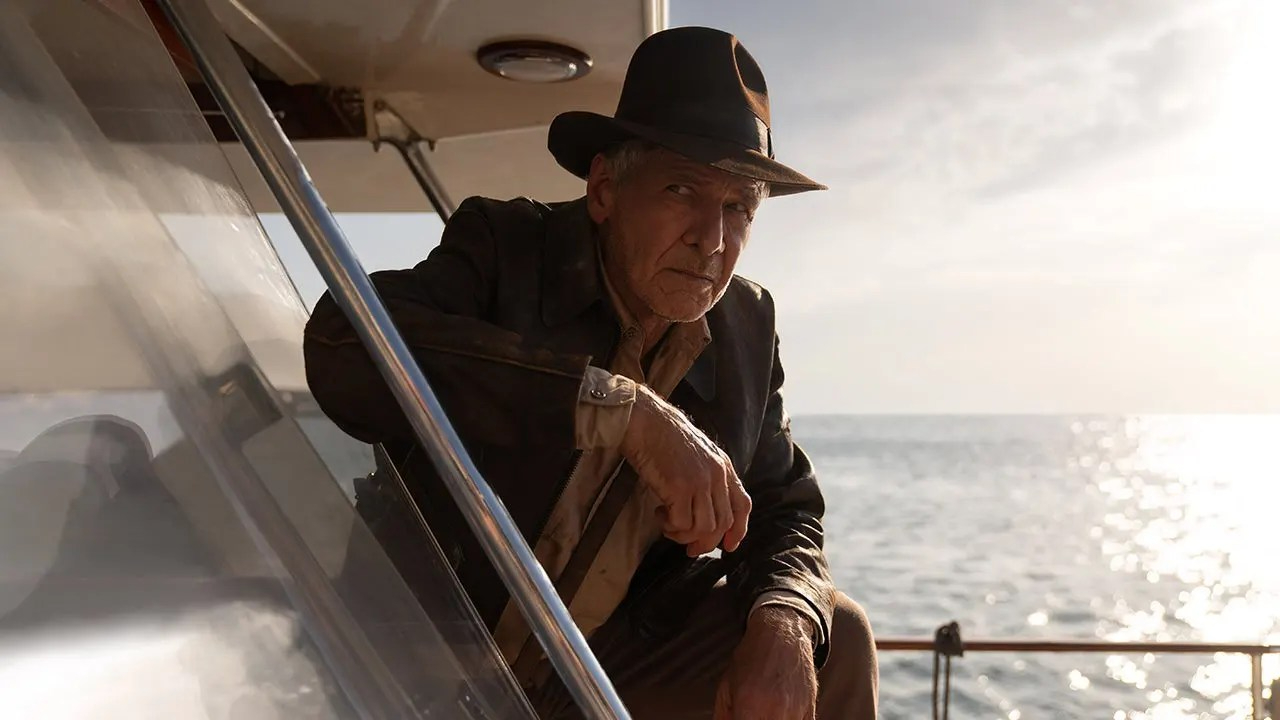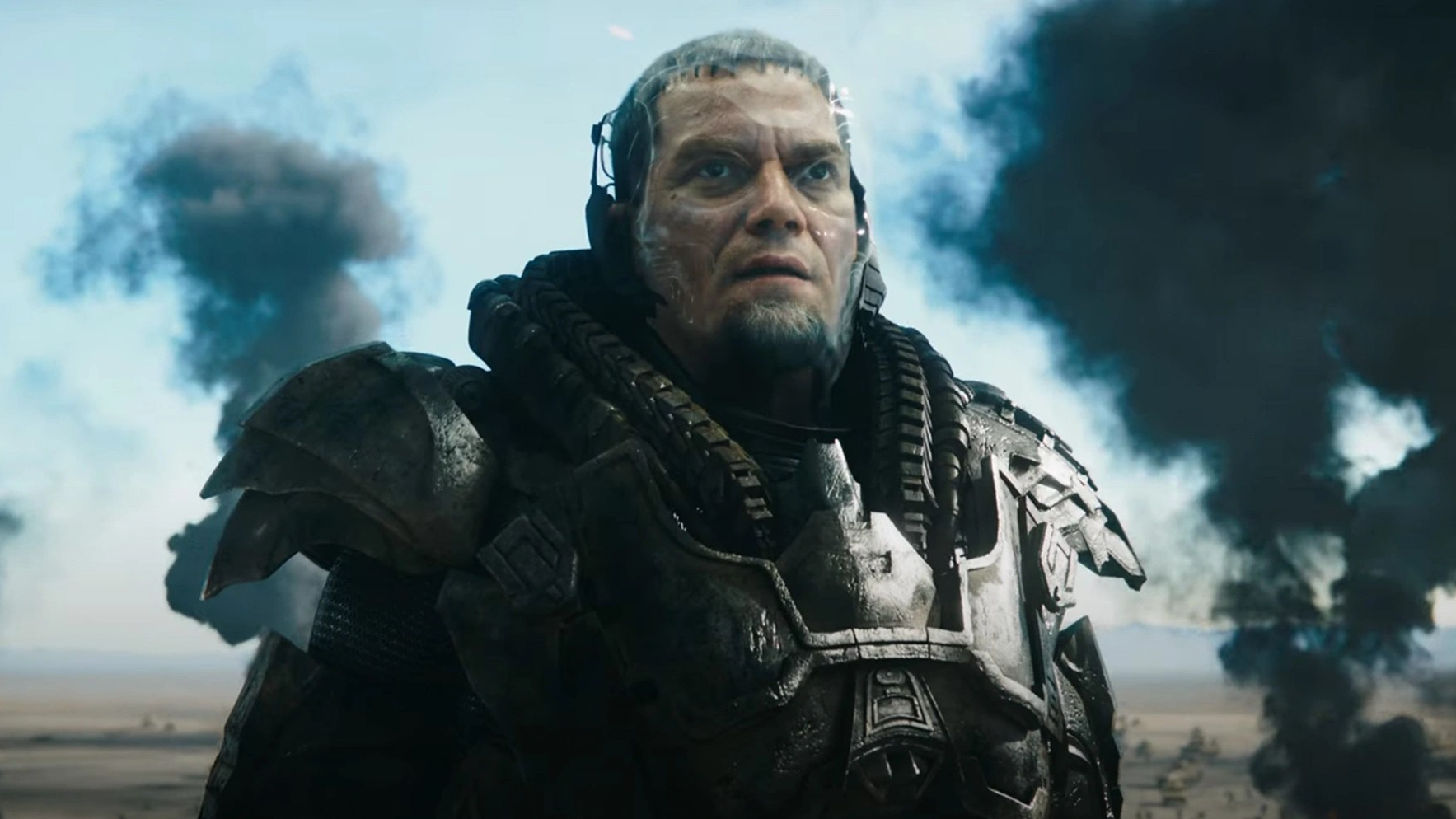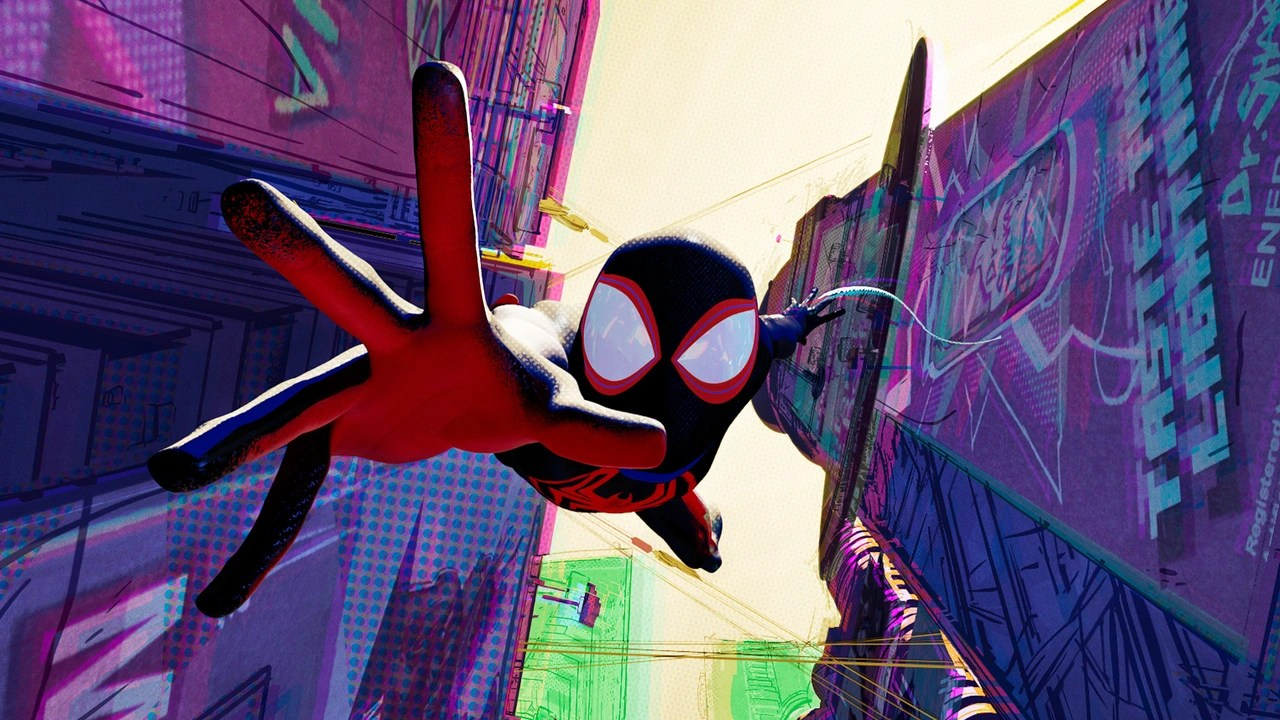INDIANA JONES AND THE DIAL OF DESTINY (2023)

In 1981, chutzpah whizzkids Steven Spielberg and George Lucas, still bathing in the runaway success of their blockbusters Jaws (1975), Star Wars and Close Encounters of the Third Kind (both 1977), became the movies’ supreme power couple when they teamed up and hit the jackpot with Raiders of the Lost Ark, a pulpy adventure full of white-knuckle set-pieces and its fair share of ghoulish goodness that further catapulted both the director and its star, Harrison Ford, into the stratosphere of superstardom. In the forty-two years since then, we’ve had three sequels, with a fourth (and supposedly final) one now playing in cinemas following several delays. The first and much-maligned attempt to rejuvenate the swashbuckling saga for the modern day, Indiana Jones and the Kingdom of the Crystal Skull (2008), was such a disappointment that one could only hope that this fifth entry would be, at the very least, passably entertaining.
This new picture, titled Indiana Jones and the Dial of Destiny, is distinct from its brethren in several noticeable aspects: most noteworthy, of course, is the absence of both Mr. Spielberg and Mr. Lucas from the production; and then there’s the fact that this is the first Indiana Jones project to come to light since Disney’s lucrative acquisition of Lucasfilm (alongside seemingly every other studio on the face of planet Earth). For this new movie, the underrated and versatile James Mangold of Logan (2017) and Le Mans ’66 (2019) sits in the director’s chair whilst the cast is led by Harrison Ford (obviously) with starry support provided in the form of Phoebe Waller-Bridge as the rather vivacious but incessantly irksome companion to our hero, Mads Mikkelsen as the villain (who would have guessed?), Boyd Holbrook as the main henchman whilst Toby Jones and Antonio Banderas have small but likeable roles as friends of Indy. John Rhys-Davies also reprises his lovable role as the fez-wearing Sallah in a pleasant but pointless cameo.

There is some truth in the sentiment that any movie involving the hat-wearing, whip-wielding archaeologist with a fear of snakes is the bane of any film critic. Ever since he first debuted on the screen, Indy is one of those beings that embodies everything that is distasteful about modern moviemaking. In the world after the astonishing success of Jaws and Star Wars, kitsch became the in vogue thing in Hollywood. Style superseded substance. Profit was more important than principle. Soundtracks, toys and merchandise were now just as important as a film’s content; quick cuts and incessant, restless movement was passed off as action. And then cinema came to be dominated by the endless sequels. Obviously, sequels had been around long before the eighties – lord only knows how many Tarzan movies were churned-out in the thirties and forties. Heck, even here in Britain we had the Hammer movies and all their ceaseless Frankenstein and Dracula films. And then, of course, there was James Bond, 007; by the time Raiders of the Lost Ark premiered, we’d already had twelve Bond pictures and no less than three actors who had donned the tuxedo. But come the eighties, the whole industry seemed geared to the sequel: Jaws, Rocky, Rambo, Halloween, Police Academy, Friday the 13th, A Nightmare on Elm Street. The list never ends. The only legitimate blockbuster that managed to elude the curse was E.T. (1982) – but give it time.
For all of today’s denouncements that cinema is little more than a crowded, chaotic playground for franchises, sequels, prequels, remakes and reboots, those same arguments first emerged in the eighties – and the Indiana Jones movies were at the forefront of this movement. Made at a time when Hollywood pandered cynically, almost desperately, to the juvenile tastes and tastes of its young audience, the Indiana Jones pictures, unlike the slew of cynical cash-grabs directed by anonymous hacks that followed in their footsteps, were – for the most part – well-made and headed by well-intentioned filmmakers. But they were also, when you get right down to it, entertainment for teenagers that didn’t further the art of cinema, at least beyond the realms of special effects. Honestly, the fact that the franchise has been going for nearly half-a-century and has only five feature-length outings to its name is laudable. But in an age of cinematic universes and ‘legacy sequels’ like Top Gun: Maverick (2022), does Indiana Jones and the Dial of Destiny still hold that same peerless magnetism that the series once had?
On the surface, Dial of Destiny has everything going for it; the familiar tropes and trappings are all there and the film makes no attempt to reinvent the wheel and instead strives to be just a cracking back-to-basics yarn. However, the longer the movie goes on, the quicker the shine fades and the cracks become more visible. It goes without saying that this is no Top Gun: Maverick. Typical of recent Disney acquired LucasFilm outings, Dial of Destiny, like the Star Wars sequels, is, for all its technical prowess, a husk of its former glory. It lacks that same wonderment that the original trilogy had (particularly the first and third) and feels more like a box-ticking corporate obligation than anything else. Spectacle is a big part of this film, both in terms of its special effects and its production design, but it’s a shaky façade. The film feels more safe than it does memorable, and the set-pieces lack weight and heft thanks in no small part to the fact everything looks and feels like a video game. In particular, the film’s lengthy WWII set prologue in which a conspicuously digitally de-aged Indy – complete with an unnaturally smooth visage and enviably thick hair – at times better resembles a sequel to Spielberg’s animated Tintin adaptation from 2011 rather than an actual Indiana Jones flick. Granted, the VFX are certainly impressive for what they are and a step up from, say, Scorsese’s The Irishman (2019), but this Ford avatar still has one foot firmly in the uncanny valley. Sadly, when the film jumps ahead to 1969, that CG heavy artifice lingers like an unwelcome fart.

As to the titular character, it’s plain to see that Mr. Ford, unlike a certain other Lucasfilm character he made famous (or made him famous, take your pick), still relishes in playing the hokey, old-fashioned Bogartian hero with a passion for history and a knack for dodging bullets and boulders without suffering so much as a graze. There is some infectious fun to be had watching Ford, now an octogenarian, play such a mythical hero with gusto. Nevertheless, the sight of Jones becoming a gloomy, failed husband/dead-beat dad is quite a baffling choice from an artistic/narrative standpoint. Why those behind the camera would ever desire to remould some of the most recognisable and charismatic pop culture heroes like Jones, Han Solo and Luke Skywalker into a bunch of pathetic, washed-up losers that make Brendan Fraser’s miserable character in The Whale (2022) look like Tigger from Winnie-the-Pooh has always befuddled me. Moreover, why anyone would willingly pay to see such characters become weak, withering shells is equally bewildering. Well done, Disney.
As for the rest of the cast, there is the intolerable presence of Phoebe Waller-Bridge who is, even in the most tactful and diplomatic terms, an unlikeable sidekick. What makes Waller-Bridge’s snarky character all the more egregious is the fact that several characters are presented to us – the best of which being Banderas in a woefully and weirdly small part that amounts to a glorified cameo – who instantly have more charisma and chemistry with Ford than Waller-Bridge does throughout the entirety of the bloated runtime. The only real beacon of hope amongst the primary players is Mr. Mads Mikkelsen, a true professional who always manages to give a role his all and elevate his part, often in spite of the weak and anorexic material handed to him.
In fairness, I still didn’t find this anywhere near as vapid and insufferable as the Star Wars trilogy of 2015-19, and when compared to its immediate predecessor, Dial of Destiny is a lot more punchy, amusing and fast-paced, though the runtime nearly two-and-a-half hours is excessive for such a formulaic plot. As to everything else, it’s familiar territory but without the zip and snap. The chases (via planes, boats, horseback and even a tuk-tuk), meaty fisticuffs, exotic escapades are high-octane and non-stop but it’s all stuff you’ve seen before and none of it leaves enough of an impression. The stakes also just don’t feel all that weighty; Indy going up against the Third Reich for control of the Ark of the Covenant? That’s solid. Indy going up against one rogue Nazi scientist and his horde of nameless, faceless and interchangeable henchmen? Not so much, I’m afraid. For all the problems one may have with the story, the corn and ham-filled visual gags and jokes in the dialogue are plentiful (“You should have stayed in New York.”, “You should have stayed out of Poland.”). But, again, I cannot, hand-on-heart say it made the film worth the price of admission – so I won’t.

The biggest misgiving, however, lies in the plot’s sci-fi edge which, as was the case in Crystal Skull, simply doesn’t work. Odd as it might be to say, but the fact is that when Indy’s involved with Abrahamic ghosts, Thuggee cults and Arthurian knights, it’s fine. When he’s taking on extra-terrestrials and time-travel? Not so much. Watching Dial of Destiny made me ponder whether it is even possible to make a satisfying Indiana Jones adventure today. Regardless of how talented the director or screenwriter are and regardless of how glowing their reputation is, or even how grand the performances from the leading players may be, the Indiana Jones movies are relics – and I say that not in a derogatory way. They were about a virile, vital, charming globetrotter in the 1930s, not a bedraggled pensioner living in a grubby and grim New York apartment in the swingin’ sixties. Expecting an Indiana Jones movie made in the 21st century to recapture the warmth and excitement of those made in the eighties was asking too much in 2008 and even more so in 2023. For better or worse, pulp-inspired matinees like Raiders, Temple and Last Crusade are a rarity these days and can never be replicated or duplicated in such self-aware times.
If you have low expectations and low standards, Indiana Jones and the Dial of Destiny is acceptable as an innocent, pleasurable and competently made Saturday serial. On a very broad, very basic level, it’s fine, it’s fun and that’s it. As far as I’m concerned, though, this instalment, despite some fine direction from Mangold, serves as little more than a dim and distressing reminder of how lively and full of bravado and charm those older movies were. Nothing here feels half as ingenious or inspired as the bazaar swordsman in Raiders, the minecart sequence in Temple or the tank battle in Crusade. The sole saving grace is John Williams’ rousing score which feels like a warm comfort blanket amidst the mediocrity that the score vainly tries to elevate. Perhaps all would be better if we just pretend that the saga concluded when Indy rode off into the sunset with his father and best friends by his side at the end of The Last Crusade.




